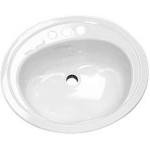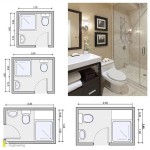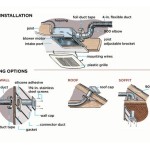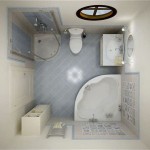Bathroom Sink With No Cabinet: Essential Aspects
When considering a bathroom sink without a cabinet, understanding its key aspects is essential for informed decision-making. These aspects influence functionality, aesthetics, and overall user experience. This article explores the crucial elements to consider, providing insights that will help you navigate the selection process.
Material and Durability
The material of the sink plays a significant role in its durability and ease of maintenance. Common materials include porcelain, ceramic, glass, and stone. Porcelain and ceramic offer excellent durability and resistance to stains, while glass and stone provide a touch of elegance but may be more susceptible to chipping or scratches.
Mounting Type
Bathroom sinks without cabinets come in various mounting types. Wall-mounted sinks provide a space-saving solution and create the illusion of a larger space. Undermount sinks are installed beneath the countertop, offering a sleek and modern look. Vessel sinks sit on top of the countertop, creating a visually striking statement.
Shape and Size
The shape and size of the sink affect both functionality and aesthetics. Round and oval sinks offer a timeless appeal, while rectangular or square sinks maximize counter space. The size of the sink should be proportionate to the countertop and bathroom layout.
Faucet Compatibility
When choosing a sink without a cabinet, faucet compatibility is crucial. Consider the number of holes required on the sink deck and the placement of the faucet. Determine the type of faucet you prefer, such as a centerset, widespread, or wall-mounted faucet, to ensure it aligns with the sink's design.
Drainage and Overflow
Proper drainage is essential for preventing water accumulation in the sink. Look for sinks with a built-in overflow hole to prevent water from overflowing. The type of drain, such as a pop-up or grid drain, should complement the sink's style and functionality.
Style and Color
The style and color of the sink without a cabinet can significantly impact the overall bathroom aesthetic. Choose a sink that complements the bathroom's design theme, whether it's traditional, contemporary, or minimalist. Consider the color of the sink and how it harmonizes with the surrounding elements.
Installation Considerations
Installing a bathroom sink without a cabinet requires careful planning and preparation. Ensure you have the necessary tools and knowledge or hire a professional plumber for proper installation. Follow the manufacturer's instructions to ensure a secure and leak-free installation.
Conclusion
Choosing a bathroom sink without a cabinet involves considering essential aspects that influence functionality, durability, aesthetics, and user experience. By carefully evaluating these factors, you can select a sink that perfectly complements your bathroom's design and meets your practical needs.

Unfitted Bathrooms

Storage Ideas For Tiny Bathrooms Blog Live More By Minto

Diy Space Saving Solution For Your Bathroom With No Counter Small

Wall Mounted Pure White Kiva Stone Resin 600mm X 300mm Rectangular Sink

30 Nadiya Wall Mount Vessel Sink Vanity Chestnut Brown No Faucet Drillings Signature Hardware

Bathroom Sinks Duravit
The Perfect Under Sink Organization Solution Thrifty Decor Diy And Organizing

Common Sink Sizes How To Choose The Right Bathroom 2024

Pros Cons Of A Vessel Sink

Diy Sink From Vintage Bowl Farmhouse On Boone
Related Posts







